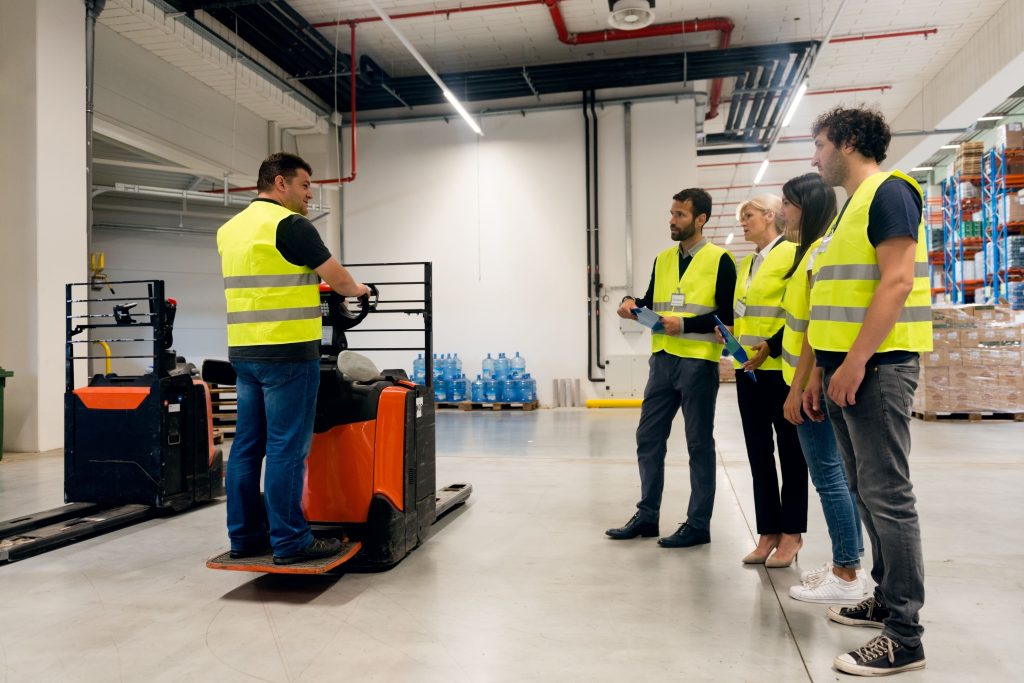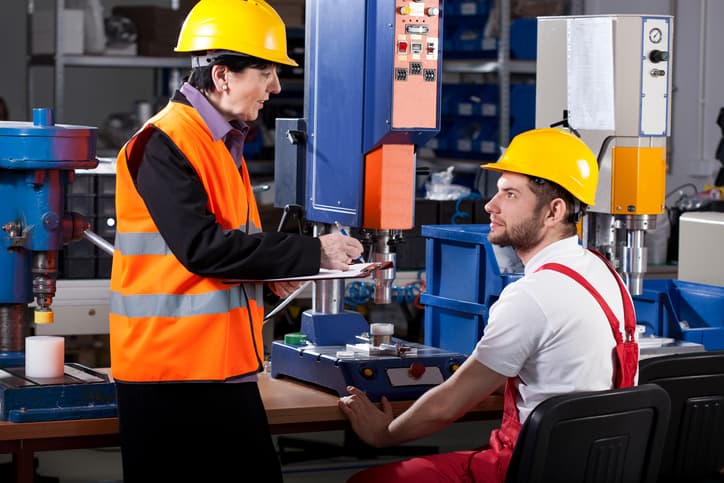BLOG
Health and safety culture | 7 ways to engage your employees in workplace health and safety
Written by Ross Henderson on 22 February 2023

Creating and maintaining a positive health and safety culture is essential for any organisation. Establishing safety as a shared value can help to reduce accidents, lost time, and associated costs, leading to increased productivity and efficiency. It can also improve employee morale and retention rates, making it an essential aspect of organisational success.
However, many organisations struggle to develop and maintain a positive safety culture, and the biggest blocker is often the attitudes of the workforce.
Getting both managers and employees to ‘buy in’ to safety management has long been a battle for businesses. However, there are several key strategies that organisations can implement to improve staff engagement and promote a positive safety culture.
First, what do we mean by health and safety culture?
The term ‘health and safety culture’ refers to the shared beliefs, attitudes, and values that shape an organisation’s approach to health and safety. It encompasses the way that an organisation prioritises the health and safety of its employees, customers, and other stakeholders, and the systems and processes it has in place to manage health and safety risks.
A strong health and safety culture is characterised by a commitment to continuously improving health and safety practices, open communication between management and employees, active involvement of all employees in identifying and addressing health and safety concerns, and a willingness to learn from mistakes and near misses.
Employees play a crucial part in promoting and maintaining a positive health and safety culture within an organisation. They are the first line of defence against workplace hazards, and their behaviour and attitudes towards health and safety can have a significant impact on the overall health and safety culture of the organisation.
So how do you get employees to ‘buy in’ to health and safety?
Do you need support?
Speak to us for an honest, no obligation chat on:
0345 226 8393 Lines are open 9am – 5pm
1. Define people's roles and responsibilities
Defining people’s roles and responsibilities is a critical aspect of establishing a positive health and safety culture in the workplace. By ensuring that key personnel know what’s expected of them, it becomes easier to monitor performance against these areas and define clear lines of responsibility. Some ways to define people’s roles and responsibilities include:
- Developing job descriptions that include health and safety responsibilities so employees understand that health and safety is an integral part of their job.
- Assigning specific roles and responsibilities to individuals or teams and outlining these within your health and safety policy. For example, a designated health and safety officer might be responsible for monitoring and implementing health and safety policies, while supervisors might be responsible for ensuring that safe work practices are followed.
- Regularly reviewing and updating roles and responsibilities, as health and safety requirements change.
All of this will mean employees are more likely to take accountability, understand the importance of health and safety, and work collaboratively towards maintaining a safe work environment.

Get an objective measure of your health and safety culture
Created by our team of highly-qualified consultants, our Safety Climate Survey is an online tool designed to uncover employees’ attitudes and perceptions to workplace health and safety by analysing accident stats, general conversations and employee feedback.
2. Take action against unsafe behaviours
Discipline is another strategy that organisations can use as a last resort when employees aren’t following safety requirements. Although it’s not an ideal solution, it can be effective in making people pay attention and understand the importance of safety.
You don’t want to be too heavy handed here, but you do want to show people that safety is taken seriously. If, for example, you let unsafe behaviours slide because those in question are otherwise ‘good employees’, you give people license to take risks, and this can quickly destroy your efforts. After all, if it’s alright for one person, then it’s alright for everyone.
Don’t forget positive reinforcement, which can often be preferable to negative reinforcement. Celebrating successes and acknowledging individuals or teams who demonstrate exemplary safety behaviour can go a long way towards establishing a positive safety culture.
3. Build trust and respect
Gaining respect is amongst the most difficult challenges new health and safety managers face. It requires a balance of firmness and trust, as going in and immediately enforcing rules without building relationships and understanding the organisation’s culture first can lead to resistance and a lack of engagement.
To build trust and respect, health and safety managers must communicate effectively with employees and listen to their concerns. They should involve employees in the development of health and safety policies, procedures and risk assessments, and make sure that everyone understands why these are important.
Regularly holding meetings with employees to discuss health and safety concerns can help to build relationships and demonstrate a commitment to their wellbeing. Managers should also be approachable and available to answer questions or provide guidance when needed.
4. Lead by example
Another way to build trust and respect is to lead by example.
Managers who consistently follow health and safety guidelines and encourage others to do the same demonstrate a commitment to safety that can inspire confidence in employees. Visible management can also play a critical role in promoting safety. Leaders who prioritise safety and visibly demonstrate their commitment to it can help create a positive safety culture.
A positive safety culture must be led from the top down. This means that responsibility for establishing and maintaining a positive safety culture falls primarily on senior executives and managers, who can set the tone and direction for the organisation’s health and safety policies and practices.
Leaders can establish policies, provide resources, model positive behaviours, and adhere to health and safety practices themselves to ensure that health and safety is a priority throughout the organisation.
5. Educate and involve
Attitudes play a crucial role in the development of a positive safety culture, and two factors that can help address negative attitudes towards safety are education and engagement.
Effective training programs can help employees understand importance of good health and safety practices and develop the skills and knowledge they need to perform their jobs safely. This doesn’t have to be boring – mock trials, for example, allow employees to experience a simulated health and safety incident in a controlled environment, making them an impactful way to drive home the risks and consequences associated with unsafe behaviour or conditions.
Training should be ongoing, and employees should be encouraged to share their knowledge and experience with others. This can help to build a culture of continuous improvement and ensure that everyone is aware of the latest health and safety best practices. This should be supported by access to resources such as safety manuals, checklists, and other tools to help employees stay informed and make educated decisions about their safety.
Additionally, look for opportunities to engage employees in safety management. Involve employees in safety initiatives, listen to their feedback and ideas, and empower them to take ownership of safety. This will help to position health and safety as a collective effort rather than a set of rules being imposed from above.

6. Communicate your commitment
Informing employees of the organisation’s intention to promote a positive safety culture is crucial. Some ways to demonstrate your commitment to providing a safe working environment include:
- Increasing visibility (for example, conducting walk-arounds with staff);
- Providing adequate information, instruction, and training to help employees develop a better understanding of safety expectations;
- Sending out regular safety bulletins and memos;
- Enrolling senior staff in training, such as our IOSH safety For Executives & Directors course;
- Displaying a policy statement clearly within the workplace and communicating it out to employees.
Related Content

FREE WEBINAR
How Better Health and Safety Practices Can Improve Your Claims Defensibility
7. Enlist expert support
Consultancy services can also play an essential role in developing a positive safety culture. Companies such as WorkNest will have experience in improving safety cultures across a variety of industries and sectors, making them a valuable resource.
As an external ‘third pair of eyes’, they can identify gaps and help mentor staff effectively, upskilling them and improving retention and buy-in. Consultancy services can also link safety to business continuity, ensuring that safety is a priority across all aspects of the organisation.
Some of the ways WorkNest can help to promote a positive safety culture include:
- Bespoke services, including gap analyses, climate surveys, mock trials and behaviour safety programmes.
- Ongoing advice and support from a named consultant, including annual health and safety audits.
- Health and safety training, including IOSH-approved courses for employees, managers and the board.
To find out how we can transform your team’s attitudes and approach to health and safety, call 0345 226 8393 or request your free consultation using the button below.



